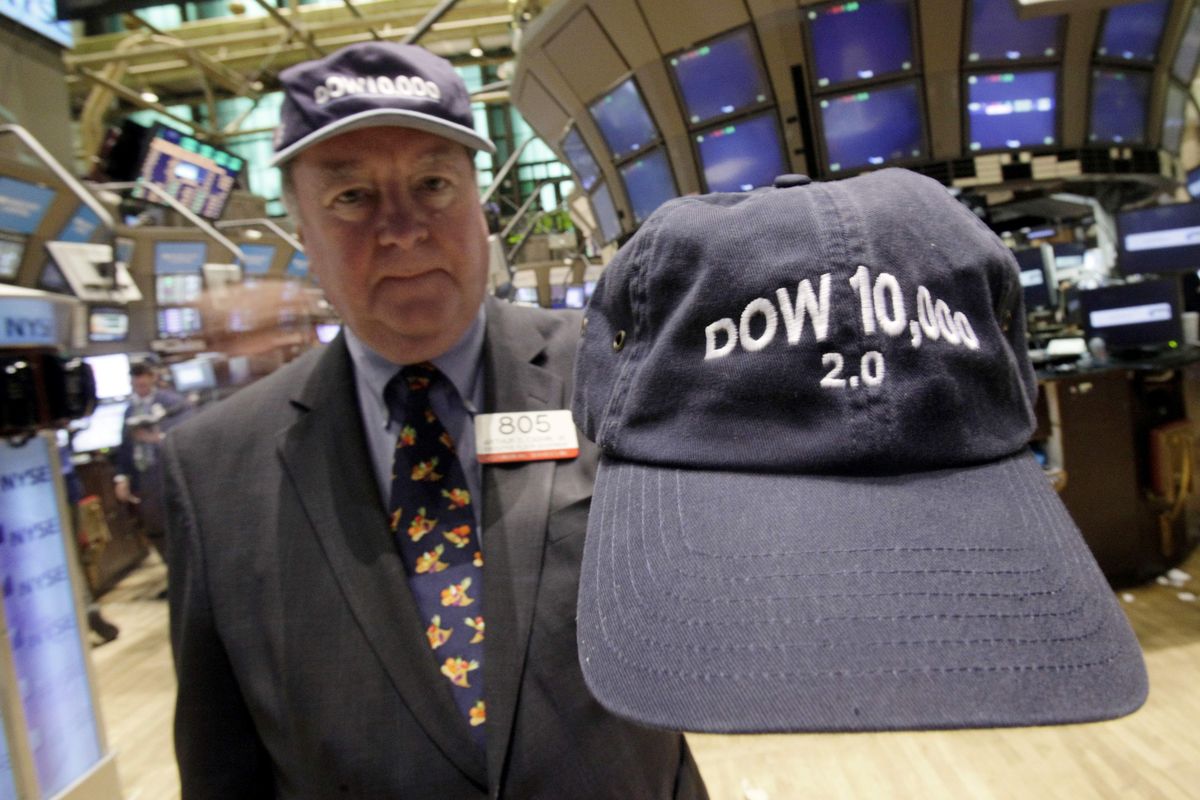Dow tops 10,000
Banking, Intel send index up nearly 145 points

NEW YORK – The Dow Jones industrial average barreled past the 10,000-point milestone for the first time in a year Wednesday, a testament to Wall Street’s powerful rebound from the financial crisis – but also to a lost decade that has left many people worse off than they were 10 years ago.
Robust profits at banking giant JPMorgan Chase and tech bellwether Intel drove the blue-chip index up almost 145 points to 10,015.86, underscoring the stock market’s growing consensus that the punishing global recession is giving way.
The turnaround is all the more remarkable given the severity of the bear market, which sent the Dow plunging 54 percent from October 2007 through early March amid falling home values, a collapse in mortgage lending and the worst economic downturn since the Great Depression.
But the speed of the seven-month rally – with stocks accelerating at their fastest pace since the 1930s – has spurred fear that share prices have gotten ahead of the economy, which is believed to have stopped shrinking but remains weak. The worry is that stocks could fall hard again if the economy slips back into recession, something that some economists say is a possibility.
Many investment professionals, however, contend that the stock market can continue to defy the naysayers and build on its gains.
“There’s still room to keep going,” said Phil Roth, a market analyst at New York brokerage house Miller Tabak & Co. “You have be careful how you play the rally, but it would be a bigger mistake to fight it.”
Still, the Dow’s return to five-digit territory highlights the deep scars many individual investors have suffered in the past decade. It also underscores today’s sharp divide between the renewed prosperity of Wall Street and the still-deep struggles of Main Street.
Powerhouse banks such as JPMorgan and Goldman Sachs Group are notching blockbuster profits thanks to speedy recoveries in their trading and finance businesses – and are on track to pay out huge employee bonuses as a result.
Through the first nine months of the year, JPMorgan has allocated $21.8 billion for bonuses and other compensation, a 23 percent rise from last year. That includes $8.8 billion at its investment-banking division, or almost $354,000 for each of the unit’s 24,828 employees.
Goldman Sachs, which is expected to report a mammoth profit today, is on pace to shell out more than $770,000 to each of its nearly 30,000 employees.
The bonuses are unlikely to sit well with the public and Congress because both companies were beneficiaries of the government’s huge bailout effort. JPMorgan received $25 billion in that program, while Goldman Sachs got $10 billion. Both firms have since repaid the money.
JPMorgan’s stock has almost tripled since March, while Goldman’s has nearly quadrupled since its low last November.
Yet many Americans are still grappling with shattered home values, devastated 401(k) accounts and the threat if not the reality of unemployment. The nation’s employers slashed 263,000 jobs last month alone as the unemployment rate rose to a 26-year high of 9.8 percent.
It’s not unusual for Wall Street to benefit from an expected rebound in the economy before ordinary Americans see any improvement. But this recovery could be weaker and restore jobs more slowly than in past rebounds, producing an even more pronounced gap between economic haves and have-nots, said forecaster Allen Sinai at research firm Decision Economics.
“There’s a dramatic night-and-day juxtaposition of a booming stock market and rich financial firms, and jobless Americans,” he said. “Part of the prosperity we’re seeing on Wall Street is because of massive job losses which preserve profits.”
The Dow first crossed 10,000 in March 1999 before the popping of the Internet-stock bubble prompted a bruising bear market early this decade.
Even though the Dow is up a spectacular 53 percent from the 12-year low it reached in March, the index must rise 41 percent from its current level just to match its October 2007 record high.
“In 1999, we thought this was the beginning of a rocket ship riding to Dow 20,000,” said Art Hogan, chief market strategist at Jefferies & Co. in New York. “This time around, we’re hitting it because we’ve moved away from the edge of the abyss.”